The creation of the atomic bomb of Hitler and how we thwarted this project
On the side of the Nazis was an outstanding physicist Werner Heisenberg and the world's largest plant for the production of heavy water in Vemork
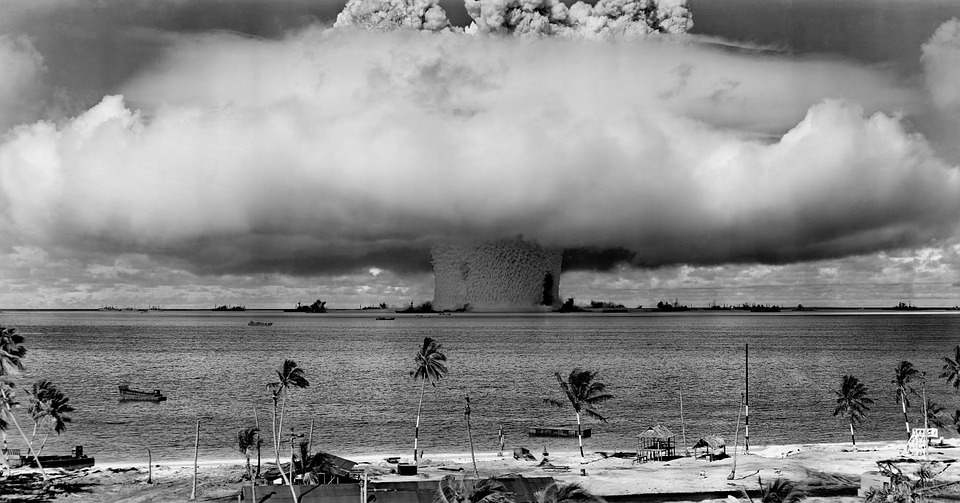
Underwater tests of the atomic bomb of the Cold War
In the 1930s, when Europe stood on the brink of World War II, many secrets of nature were revealed to scientists all over the world. It was found that the atomic nucleus consists of several parts - protons and neutrons - with different binding energies. Some atoms were radioactive in their own right, that is, they emitted helium nuclei (alpha decay) or electrons (beta decay), decaying to more stable elements, while other atoms could be forced to trigger nuclear reactions, forcing them to capture neutrons from the outside.
While the sun converts light elements (hydrogen) into heavier ones (helium) with the release of energy, the heaviest substances can also release a huge amount of energy, splitting into parts during nuclear fission. When the first fissionable element (uranium-235) was discovered, scientists immediately found out that when nuclear fission of uranium is released 100,000 times more energy than when detonation of trotyl of the same mass.

The chain reaction of the fission of an atom of uranium-235
')
The way to cause a nuclear reaction is simple: you need to bombard the fissionable material with neutrons. Want to make a nuclear reaction more efficient? There are several ways:
- Increase the proportion of fissile material in the sample.
- Slow down neutrons so that they are more efficiently absorbed.
- Remove from the sample the extra neutron absorbing substances so that more neutrons go to their destination.
- Make the reaction self-sustaining: then new neutrons are produced with each fission reaction.
In the United States, scientists in the Manhattan Project understood all this. They have come a long way to make their atomic bombs work.
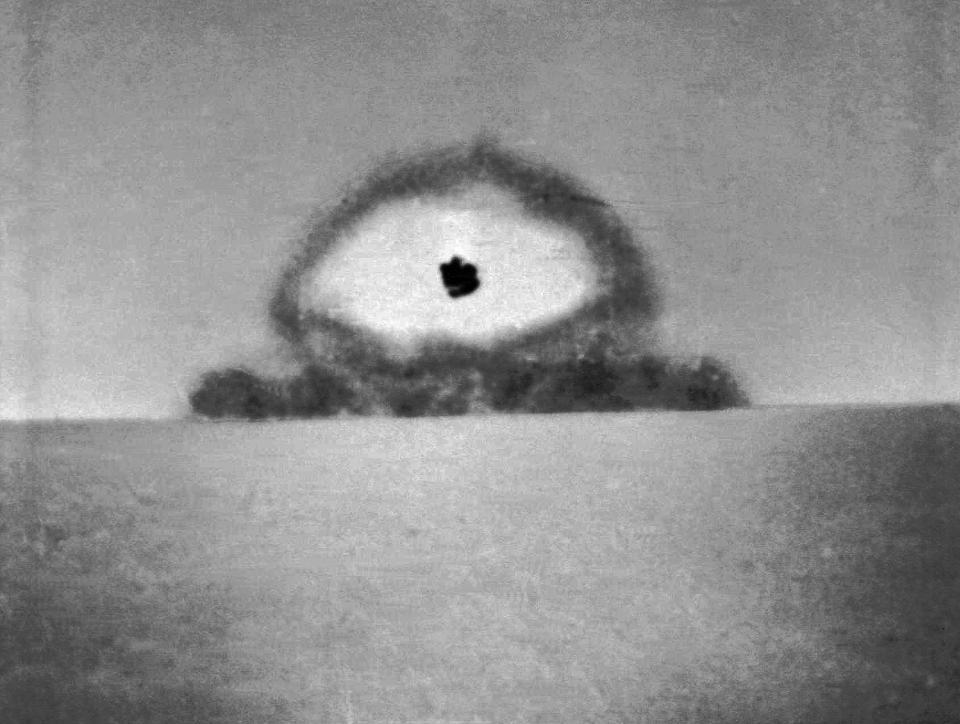
Tests of the first experimental atomic bomb in the desert near Alamogordo, New Mexico, 1945
Enriched samples of uranium-235 and plutonium-239 were obtained: fissile materials, which emit an incredible amount of energy when bombarded with neutrons, and also produce additional neutrons to continue the chain reaction. Both water and graphite turned out to be excellent carriers for slowing down neutrons. Since energy was transferred during the collision of neutrons with the nuclei of these carriers, the neutrons slowed down. However, ordinary water (H 2 O) did not fit too well, because free protons in the hydrogen nucleus capture neutrons to form deuterium. But if you use “heavy water” made of deuterium (D 2 O), or at least “light heavy water” (HDO) in the reactor, then neutron absorption by uranium is greatly increased, which allows you to create material for an atomic bomb of tremendous efficiency. In the 1940s, American scientists Robert Oppenheimer, Edward Teller, and others understood all this - and in the end achieved success.
But at the same time in Nazi Germany, the relatively little-known Kurt Dibner and the titan of theoretical physics, Werner Heisenberg, came to exactly the same conclusions, and also worked on creating their own atomic bomb.
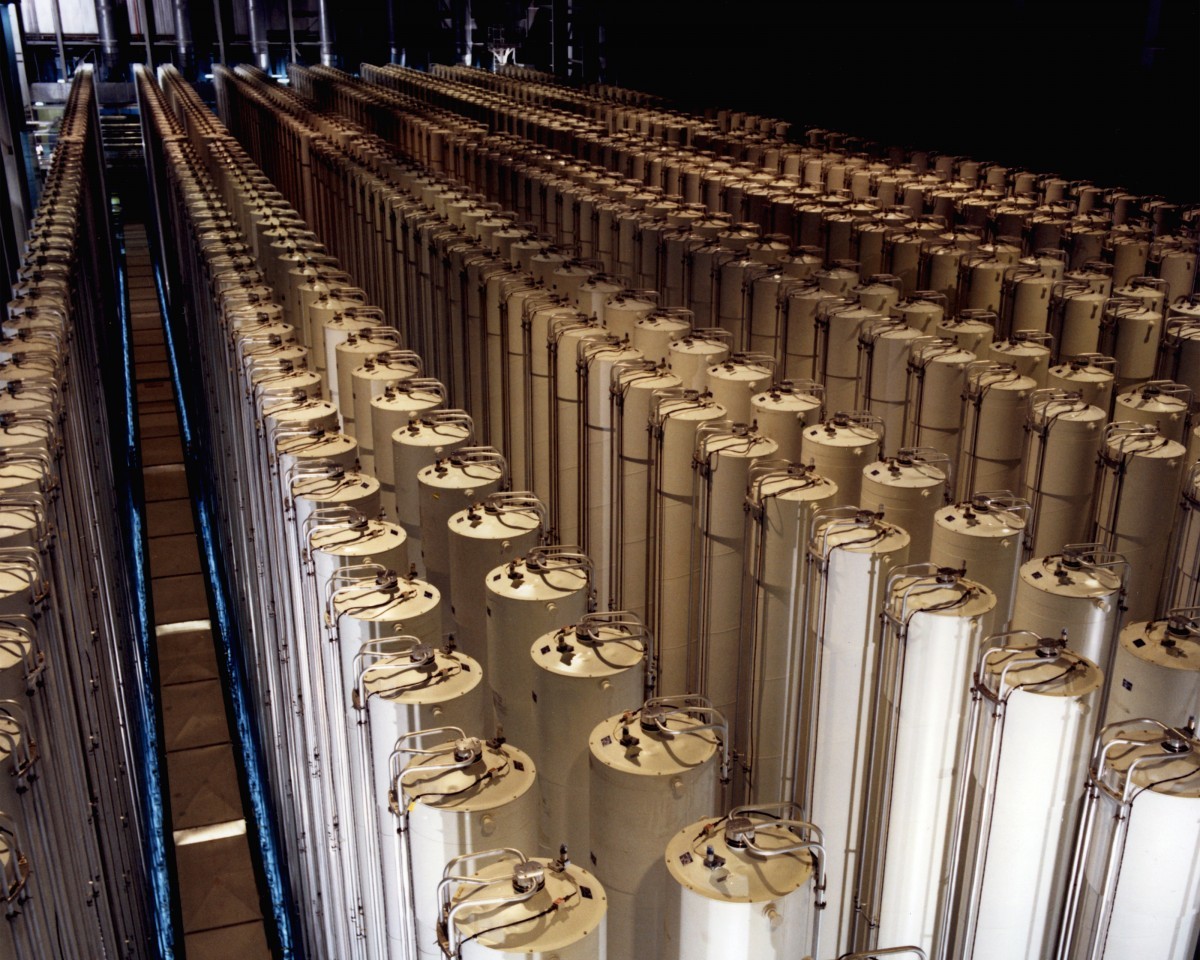
In natural uranium, less than 1% of the isotope uranium-235. With enrichment in the reactor can be obtained 3-4%. But weapons-grade uranium requires a concentration of about 90% of uranium-235, which in the United States is obtained in gas centrifuge cascades, as in this 1984 picture. Photo: US Department of Energy
At the beginning of the 1940s, the Germans were much ahead of the Allies in their research, having obtained all the necessary ingredients for the atomic bomb, except for one thing: heavy water. It could be obtained only in Norway and only in one specific plant in Vemork. This was probably the main reason for the Nazi invasion of Norway in 1940. Norsk Hydro engineers were forced to speed up the production of a mysterious substance, which - as they were joking - was only good for improving the rollers (since it froze at 4ºC, and not at 0ºC, like ordinary water). By 1942, more than a ton of the substance was shipped to Germany. According to the calculations of Heisenberg and others, for the production of the atomic bomb required from three to six tons of heavy water.
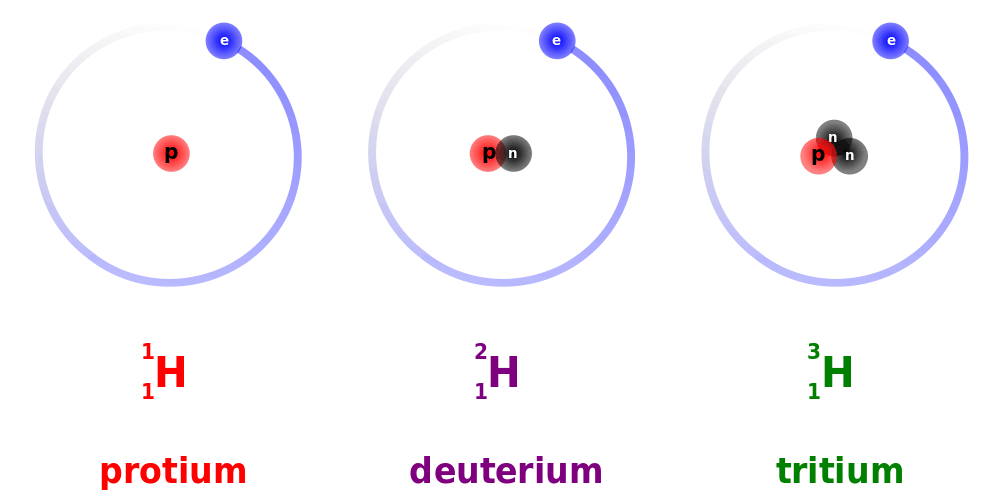
Three isotopes of hydrogen: ideal heavy water (D 2 O) consists of two deuterium atoms and one oxygen atom
Still, the Nazis did not succeed in finishing their bomb, thanks to the joint efforts of the Norwegian Resistance and the British Special Operations Directorate (ODR - a special service that operated during the war) to disrupt the production of heavy water in Vemork.
The sabotage operations were led by the Norwegian scientist Leif Tronstad (Leif Tronstad), who managed to find out the plans of the Nazis, to leave the territory of the occupied country and to warn the allies. Everything went into action: from the contamination of heavy water with fish oil to the attempt to transport 230 kg of equipment in the Norwegian winter, only to fail due to a dead battery when the load fell into the ice on the river.
The tragic attempt to blow up the plant was made at the end of 1942, but the saboteurs' gliders crashed, and the Gestapo themselves executed them.
However, in February 1943, as a result of Operation Gunnerside, a group of Norwegian commandos who had been trained in ODR managed to destroy the production facility on the second attempt. Coinciding with the painful defeat of the Nazis at Stalingrad, this event truly meant a crucial turning point in the war. The destruction of the plant in Vemorka became known as the most successful diversion of the entire Second World War.
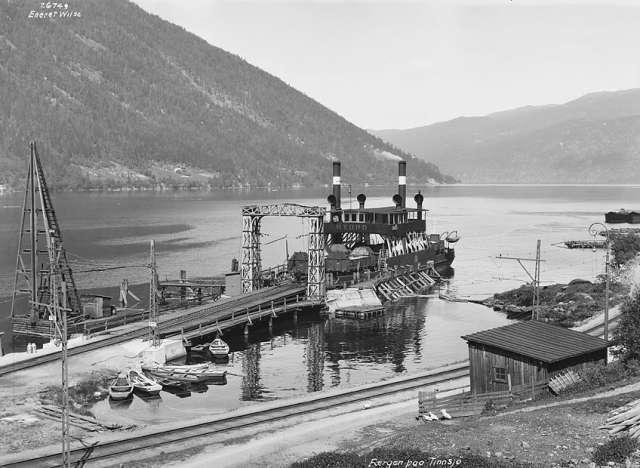
Hydro ferry that shuttled between Rollag and Mael stations, 1925
But the story did not end there. In 1944, the Nazis attempted to transport the remnants of heavy water to Germany using the steam railway SF Hydro (or DF Hydro), in the last attempt to extract heavy water. Resistance fighters flooded this ferry to a depth of 400 meters, burying the hopes of Nazi Germany to get materials for the atomic bomb. If it were not for the Norwegian Resistance, Leif Tronstad and the British ODR, then the rest of the Second World War (not to mention the world after its termination) could go in a completely different direction.
As it turned out, the battle for the world's largest plant for the production of heavy water has become one of the most important and at the same time one of the most obscure stories of World War II.
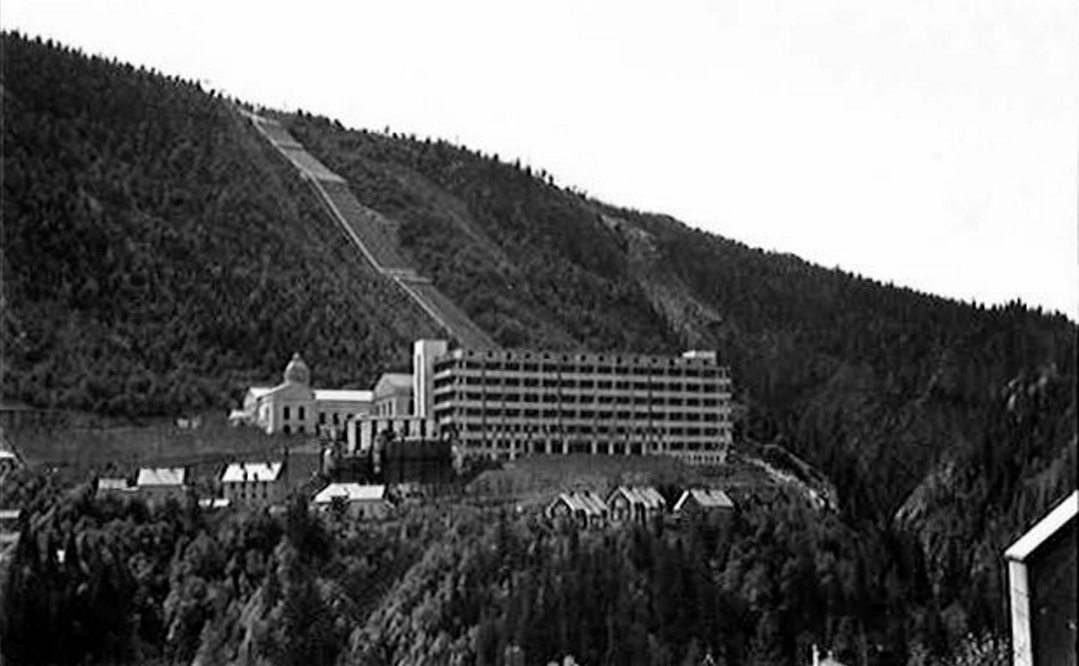
Wemork Hydroelectric Power Plant near the town of Rjukan, Norway, 1935. Heavy water was produced in the front building.
I am pleased to report that the full history of the plan to disrupt the production of the atomic bomb of Hitler with historical and scientific accuracy is presented in the new book of Winter Bascombe, Nil Bascombe. As a person who thoroughly enjoys and collects books on the history of the Second World War, this work will occupy an honorable place alongside Harrison Salisbury’s 900 Days of Survival in besieged Leningrad and the History of Colditz about the most successful escape of prisoners of war when more than 300 people escaped from the most guarded Nazi prison in Colditz Castle.
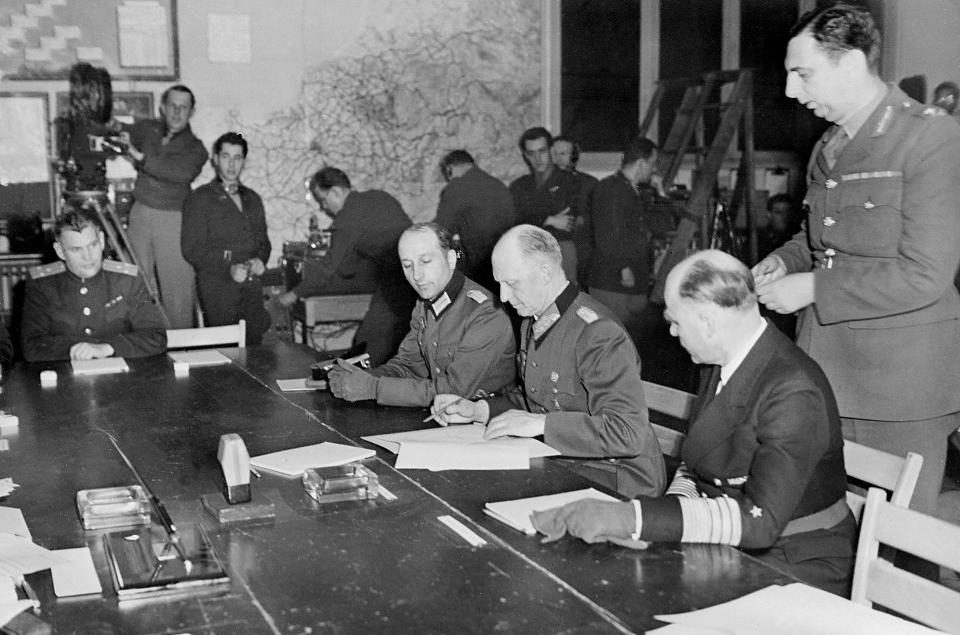
General Alfred Jodl signs a document on the surrender of Germany on May 7, 1945, ending the Second World War in Europe
Perhaps there is no better outcome for the heritage of our planet, that the great Heisenberg went down in history as the author of the uncertainty principle - about the essence of the uncertain relationship between variables, such as coordinates and momentum or energy and time - and not as the creator of weapons that allowed the Nazis to take over the world. Instead, the story went a different way: just four months after the flooding of the SF Hydro ferry, a naval landing in Normandy took place and a massive Allied invasion of Europe began. After 11 months, Germany capitulated. This is a rare case when the connection between science, war and history is so clear. At the same time, we can say that we now live here on Earth, in relative peace and tranquility, thanks to the brave actions of a group of saboteurs in 1943 who saved the world.
Source: https://habr.com/ru/post/393613/
All Articles